6 Essential Power Tools for Beginner Woodworkers
- May 17, 2024
- 0 comment
Diving into woodworking can be as exciting as it is challenging. It’s a craft that combines creativity with the practicality of making things you can actually use. Everyone who crafts beautiful pieces from wood starts somewhere, just like you are now. Norm Abram, a master carpenter known for his practical wisdom, always says, “Measure twice, cut once.” This advice highlights the importance of careful planning and patience, key ingredients in your new hobby.
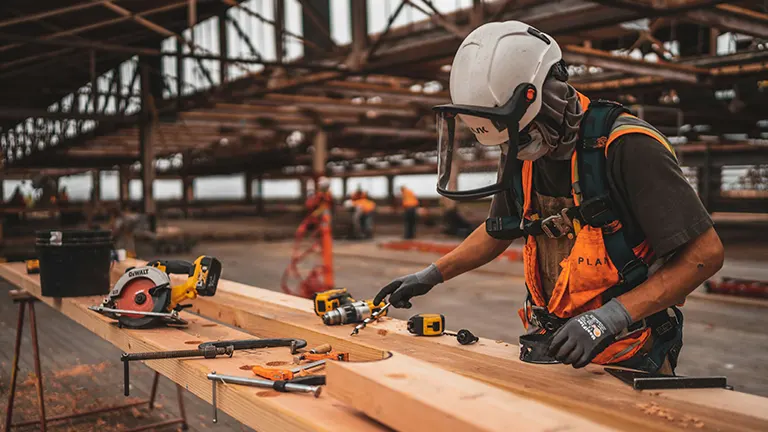
As we look at the must-have tools for beginners, remember that having the right tools will not only make your projects easier but also more enjoyable. Whether your workspace is a tiny corner of your garage or a full-sized shed, these essential tools will set you on the path to bringing your wooden creations to life. Let’s explore these tools and get you ready to start building and learning with every piece you craft.
1. Drill and Driver Combo: The Dynamic Duo
A drill and driver combo should be your inaugural purchase. Opting for a combo kit is a savvy move, as it usually includes a drill, an impact driver, chargers, and batteries, often at a discounted price. Brands like Milwaukee, Ryobi, and Rigid are reliable choices, but your decision may hinge on simpler factors like color preference or compatibility with existing batteries. Remember, the flexibility of cordless tools can significantly ease your woodworking tasks, though corded drills are more budget-friendly.
Alternative Options:

High-End Option
Makita 18V LXT Brushless Combo Kit offers superior durability and advanced technology for smoother operation and longer battery life.
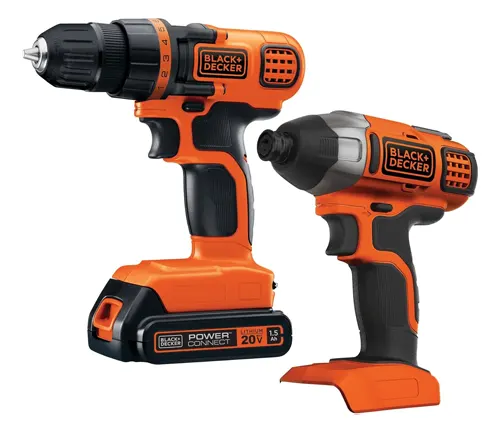
Budget-Friendly Option
Black + Decker 20V MAX Drill & Impact Driver Combo Kit provides solid performance for beginners without breaking the bank.
2. Circular Saw: The Versatile Cutter
Next up, consider a circular saw, especially one included in a combo kit with your drill and driver. This tool is invaluable for cutting large sheets of wood or making quick cuts. While circular saws come in various voltages, the key is to choose one that balances power with battery life. For beginners, a 12-volt saw might suffice for lighter, less frequent jobs.
Alternative Options:
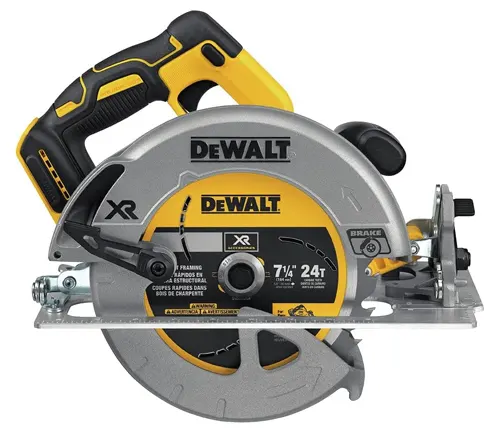
High-End Option
DeWalt 20V MAX Circular Saw features a powerful motor, excellent battery efficiency, and precision cutting.
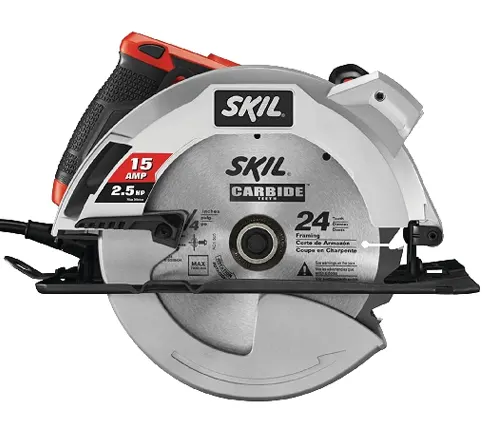
Budget-Friendly Option
SKIL 5280-01 15-Amp 7-1/4-Inch Circular Saw with Single Beam Laser Guide offers great value with sufficient power for most beginner projects.
3. Sander: Smooth Finishes Every Time
A quality sander is crucial for achieving smooth finishes on your projects. Avoid the cheapest models, as they tend to wear out quickly. Brands like DeWalt offer durable options that stand the test of time. For most projects, sandpapers with grits of 80, 120, and 220 will cover your needs.
Alternative Options:
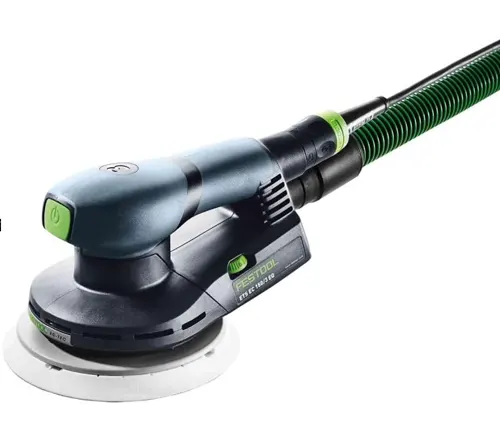
High-End Option
Festool Random Orbit Sander ETS EC 150/3 is known for its exceptional build quality and virtually dust-free operation, perfect for serious hobbyists.
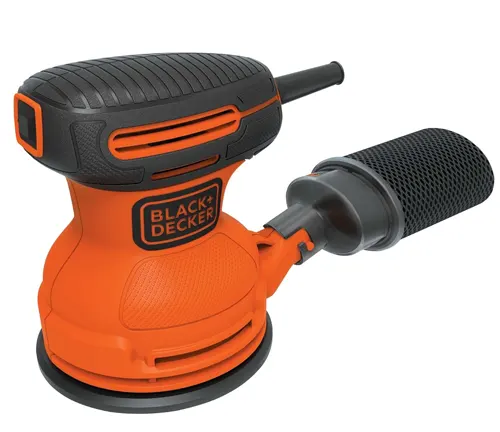
Budget-Friendly Option
BLACK+DECKER Random Orbit Sander, 5-Inch (BDERO100) achieves good results for a fraction of the price.
4. Miter Saw: Precision in Every Cut
A miter saw is essential for making accurate crosscuts and angles consistently. It’s particularly useful for projects requiring precise, repetitive cuts, such as frames or molding. The DeWalt DWS779, known for its durability and accuracy, is a highly recommended choice for both beginners and experienced woodworkers.
Alternative Options:
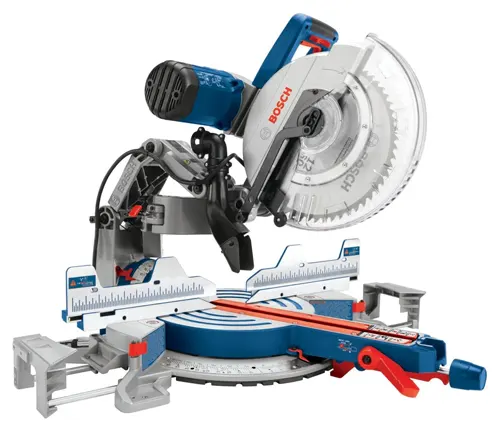
High-End Option
Bosch Power Tools GCM12SD Glide Miter Saw provides unmatched precision and cutting efficiency with its innovative glide system.

Budget-Friendly Option
Metabo HPT 10-inch Compound Miter Saw offers reliability and accuracy at a more accessible price point.
5. Router: For Detailed Work
A router will elevate your woodworking by enabling you to create detailed designs and finishes. It’s useful for tasks like creating dovetails, dados, or decorative edges. When choosing your first router, consider whether you’ll be doing intricate work that justifies a more powerful, corded model, or if a lighter, cordless model would suffice.
Alternative Options:

High-End Option
Bosch 1617EVSPK Wood Router Tool Combo Kit – this router offers versatility with both a fixed and a plunge base, ideal for a wide range of routing applications.

Budget-Friendly Option
Ryobi One+ 18V Cordless Router is perfect for beginners and light-duty tasks, with the convenience of cordless operation.
6. Table Saw: The Workshop Staple
Finally, a table saw is a pivotal addition to your workshop, ideal for making straight, precise cuts along the length of a board. It’s versatile enough to handle everything from rip cuts to complex joinery. A quality table saw ensures accuracy and can handle a variety of materials and cuts.
Alternative Options:
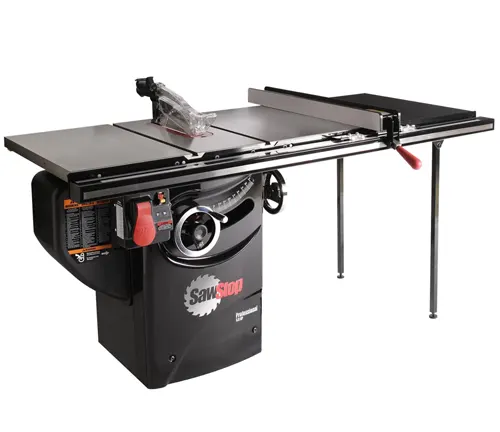
High-End Option
SawStop 10-Inch Professional Cabinet Saw provides top-of-the-line safety features and precision, ideal for those looking to invest in a long-term solution.

Budget-Friendly Option
SKIL 15 Amp 10 Inch Table Saw – TS6307-00 offers excellent performance and essential features at a price that won’t stretch your budget.
Safety Guidelines: Ensuring Safe Use of Woodworking Tools
- Drill and Driver Combo Safety: When using a drill and driver combo, always wear protective gear like safety goggles to shield your eyes from flying particles. It’s important to secure the workpiece with clamps to prevent any movement during drilling or driving. Keep your work area free of clutter, especially loose cords that could trip you.
- Circular Saw Safety: The circular saw’s blade guard is a crucial safety feature that should never be disabled. Make sure it’s functioning properly before each use. Support the material you’re cutting adequately, and ensure that the cut-off piece can fall freely to avoid binding and kickback. Always keep your hands away from the blade and use a push stick when making cuts close to the blade.
- Sander Safety: Protect yourself from dust by wearing a mask or respirator along with safety goggles. Maintain a secure grip on the sander, using both hands for better control, particularly when turning the machine on or off. Before use, inspect the sander’s cord and plug for any damage and make sure to use grounded outlets to avoid electrical hazards.
- Miter Saw Safety: Always check that the blade guard on your miter saw is working properly and never operate the saw without it. To prevent kickback, hold your workpiece firmly against the fence during cutting. Never reach under the spinning blade or across the cutting area, as this could lead to severe injuries.
- Router Safety: Safety goggles and ear protection are essential when using a router due to its noise level and the potential for flying debris. Always check the installation of the bit and the router’s adjustment settings before powering it on. Keep your hands well away from the bit and maintain a firm grip on the handles at all times.
- Table Saw Safety: Utilize a riving knife on your table saw to prevent dangerous kickbacks. Never start the saw with the blade engaged in the wood. Employ a push stick to keep your fingers away from the blade, particularly during narrow cuts. Be cautious with your attire; avoid loose clothing or dangling jewelry, and keep long hair tied back to prevent any entanglement in the saw.
General Safety Practices
Familiarize yourself with the operational manuals of each new tool to understand its operations and safety features fully. Keep your workspace clean and orderly to prevent accidental trips and falls. Always remain alert and focused when using tools—avoid operating machinery when tired, distracted, or impaired. Following these safety practices not only minimizes risks but also enhances your overall woodworking experience, keeping it enjoyable and safe.
Additional Resources: Enhance Your Woodworking Knowledge
To further enhance your woodworking skills and knowledge, here are some specially selected books along with a valuable online resource to guide you:
Books:
- “The Complete Manual of Woodworking” by Albert Jackson, David Day, and Simon Jennings – This book offers a comprehensive look at the essentials of woodworking, covering tools, materials, and techniques in depth.
- “Woodworking For Dummies” by Jeff Strong – Ideal for beginners, this guide simplifies the basics of woodworking, providing clear instructions and practical tips.
- “The Essential Woodworker: Skills, Tools and Methods” by Robert Wearing – Focuses on the core skills needed for woodworking, particularly with hand tools, and is an excellent resource for building foundational knowledge.
- “The New Complete Guide to the Band Saw” by Mark Duginske – Offers insights into one of the most versatile tools in woodworking, with detailed information on usage, maintenance, and creative applications.
- “The Real Wood Bible: The Complete Illustrated Guide to Choosing and Using 100 Decorative Woods” by Nick Gibbs – A detailed guide to understanding and selecting the right wood for your projects.
For more woodworking insights, tips, and project ideas, be sure to visit our website at Forestry.com. It’s a great place to expand your woodworking knowledge and connect with a community of like-minded enthusiasts.
Closing Thoughts and Tips for Buying
When purchasing these tools, look for reliable brands and consider how each tool fits into the overall workflow of your projects. Check for combo deals to save money, and choose tools that offer the best balance of performance, durability, and price. As you grow in your woodworking skills, these tools will serve as the foundation of countless projects.
By starting with these essential tools, you’ll be well-equipped to tackle a wide range of woodworking projects and enjoy a fulfilling journey into the craft of woodworking. Happy building!
FAQs
- What are the essential tools I need to start woodworking?
You’ll need a drill and driver combo, a circular saw, a sander, a miter saw, a router, and eventually a table saw. These tools will handle most beginner projects. - How much should I budget for my initial set of tools?
A basic set of quality tools can cost between $500 and $1,000. Look for combo kits to save money, and consider buying some tools used to stretch your budget. - Is it safe for beginners to use power tools?
Yes, but you should always follow safety guidelines. Always wear protective gear, read the tool manuals, and possibly watch safety tutorials online before starting. - Can I use hand tools instead of power tools?
Yes, many woodworkers use hand tools exclusively. They’re quieter and can offer more control for some techniques, but they require more skill and physical effort. - What’s the best way to learn woodworking skills?
Start with simple projects like small boxes or shelves. Online tutorials, woodworking classes, and local community workshops can provide hands-on learning and tips. - How do I maintain my woodworking tools?
Keep them clean and sharp, and store them in a dry place. Regularly check for alignment and wear, especially on moving parts and blades. - What materials should I start with?
Begin with softer woods like pine or cedar, which are easier to cut and less expensive. As you gain experience, you can move on to hardwoods like oak or maple.
We hope this guide helps you kick off your woodworking journey with confidence! If you have any tips, favorite tools, or questions, don’t hesitate to drop them in the comments below. Your insights could be the guiding light for fellow beginners stepping into this rewarding craft. Happy woodworking, and remember, every chip of wood and every sawdust trail tells part of your story. Share your thoughts and let’s grow together in this creative journey!

Charles Hayes
Forestry AuthorI'm Charles Hayes, I bring over 15 years of specialized expertise in landscaping and woodworking, blending artistic design with sustainable environmental stewardship. My career, fueled by a profound passion for the natural world, encompasses extensive education and hands-on experience in creating harmonious, eco-friendly outdoor spaces and responsibly managing forest resources. Recognized for my professional standing, I am committed to continuous learning and certification in cutting-edge practices. My expertise is not only reflected in my work but also in my contributions to community projects, educational workshops, and collaborations with industry leaders. As an authoritative voice in my field, I strive to share knowledge and promote environmentally conscious approaches, making me a trusted resource in landscaping and forestry.













Leave your comment